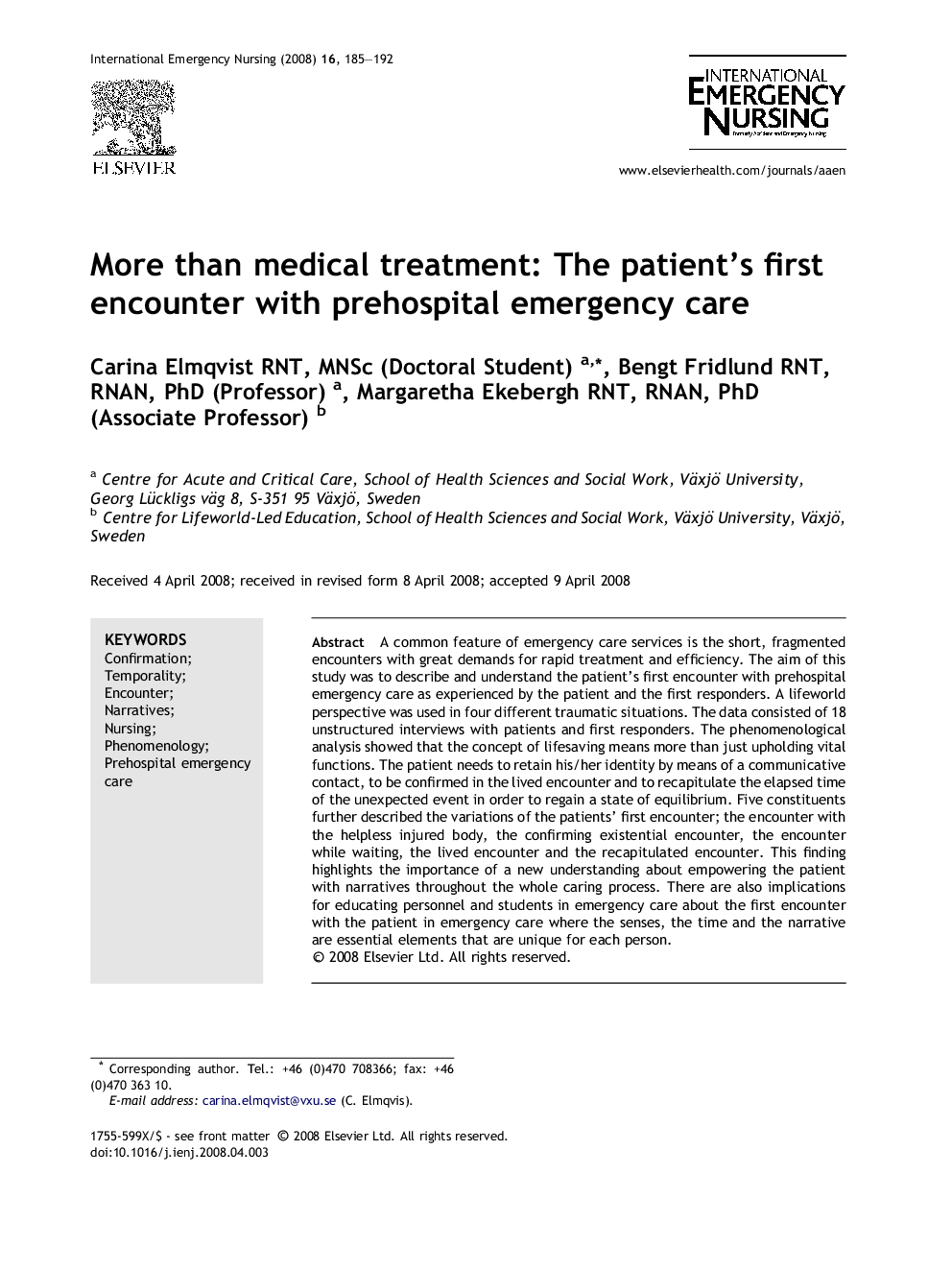| Article ID | Journal | Published Year | Pages | File Type |
|---|---|---|---|---|
| 2609766 | International Emergency Nursing | 2008 | 8 Pages |
A common feature of emergency care services is the short, fragmented encounters with great demands for rapid treatment and efficiency. The aim of this study was to describe and understand the patient’s first encounter with prehospital emergency care as experienced by the patient and the first responders. A lifeworld perspective was used in four different traumatic situations. The data consisted of 18 unstructured interviews with patients and first responders. The phenomenological analysis showed that the concept of lifesaving means more than just upholding vital functions. The patient needs to retain his/her identity by means of a communicative contact, to be confirmed in the lived encounter and to recapitulate the elapsed time of the unexpected event in order to regain a state of equilibrium. Five constituents further described the variations of the patients’ first encounter; the encounter with the helpless injured body, the confirming existential encounter, the encounter while waiting, the lived encounter and the recapitulated encounter. This finding highlights the importance of a new understanding about empowering the patient with narratives throughout the whole caring process. There are also implications for educating personnel and students in emergency care about the first encounter with the patient in emergency care where the senses, the time and the narrative are essential elements that are unique for each person.
